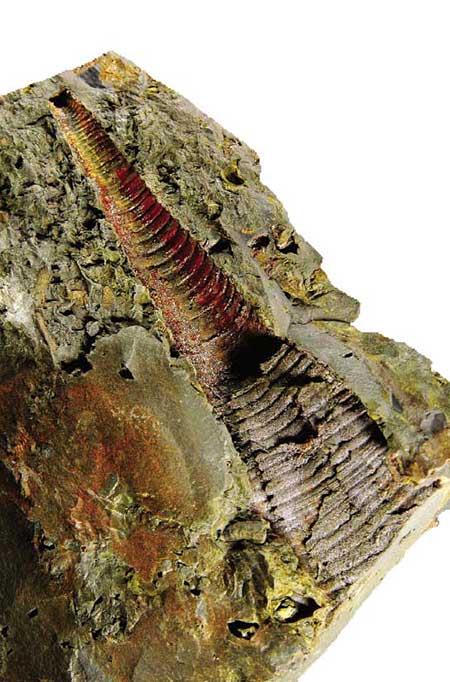Cephalopods
Cephalopods, belonging to Phylum Mollusca, are characterized by heads with large eyes and jaws in the middle of the body. The belly containing the internal organs is on one side and long tentacles on the other side.
Cephalopods' coiled shells, as represented by those of ammonites, look like the shells of gastropods, but their internal structure is quite different. The larger chamber (body chamber) at the end of the shell houses the belly, but the rest of the chambers (phragmocone) function collectively as an organ to control buoyancy. The gas/liquid ratio in the chambers controls the buoyancy, so that the swimming depth and/or body posture can be controlled.
Cephalopods are divided into three orders, namely Nautiloidea, Ammonoidea and Coleoidea, of which nautiluses with a straight shell first appeared early in the Cambrian Period. Eventually they gave way to ammonites that first appeared in late Silurian times and flourished greatly from the middle Devonian. They survived the terrible extinction of the Permian, through which about 90% of all marine animals were extinguished.
The surviving cephalopods, especially ammonites, increased rapidly in diversity into the Mesozoic Era, and enjoyed the zenith of their prosperity. All the ammonites, however, disappeared forever during the late Cretaceous extinction.

Straight Shelled Nautiloid Orthoceras
Nautiloid
Jigunsan Formation (Ordovician)
Taebaek, Korea / About 11 cm long
This is a primitive nautiloid that lived together with trilobites in the sea. The incipient cephalopods with a long conical shell, eventually evolved to have a coiled shell that helped to maintain a more stable posture in water. Even though the calcareous shell is not preserved, the section of phragmocone that functioned as the buoyancy controlling organ is partly shown as the original surface of the shell has created a mold in the rock.